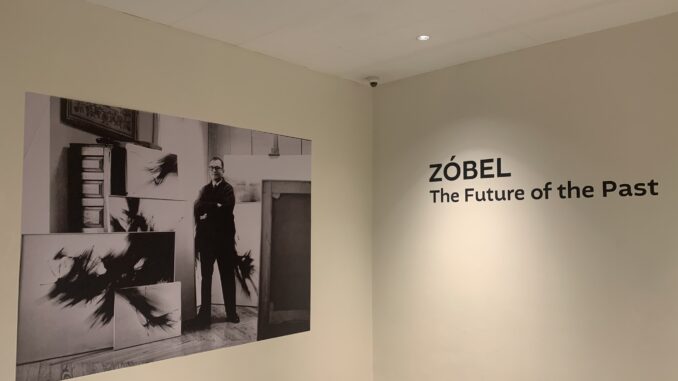
International Fernando Zóbel exhibition makes Asian debut at Ayala Museum
Throughout his life, Fernando Zóbel created introspective modern artworks, likely influenced by his diverse experiences, ranging from his education in history and literature to his encounters with abstract expressionists. His unique perception of the world became the focal point of much of his work, depicting not just what lay before him but offering a deconstruction and reconstruction of how everything unfolded.
To explore Zóbel’s artistic journey and understand how his works came to be, the multimedia exhibition Zóbel: The Future of the Past has arrived in Asia, premiering at the Ayala Museum.
Following its four-month run at the Museo Nacional del Prado in Madrid in 2022, the exhibition aims to showcase Zóbel’s ability to integrate various artistic traditions from Asia, America, and Europe. The Manila iteration will feature more than 200 works by Zóbel, including sketchbooks that have never been seen by the public.
Felipe Pereda, the Fernando Zóbel de Ayala Professor of Spanish Art at Harvard University and one of the exhibition’s curators, said the exhibit is intended to rediscover Zóbel, not only as a prominent figure in 20th-century abstract art but also as a complex artist.
“The exhibition we are presenting offers a completely renovated, much more ambitious, complex, and beautiful portrayal of Fernando Zóbel’s work, built upon The Future of the Past exhibition at the Prado Museum, but now tailored specifically for the Philippines,” Pereda said.
Pereda added that the exhibition examines Zóbel’s craft as a cosmopolitan artist, born into a Spanish family in the Philippines, educated in the U.S. at Harvard University, and practicing his art in Europe, all of which played integral roles in his creations.
Many artworks in the exhibit feature Zóbel’s distinct abstract style, blending fundamentals of still-life painting with a deconstructed and reconstructed view of objects in time. Other pieces, such as photos, sketchbooks, and videos, provide further insight into the development of his masterpieces.
Pereda’s co-curator, Manuel Fontán del Junco, director of museums and exhibitions at Fundación Juan March, discussed how the Manila exhibition differs from the one at Prado.
“In the Prado exhibition, the central narrative was chronological—how Fernando Zóbel, in a very original way, was an avant-garde artist who didn’t reject the past but translated it into the realm of abstraction, the primary language of 20th-century art,” said del Junco.

“But it was necessary to focus more on Zóbel’s role as a kind of manager of space, which is better explained in our exhibition in Manila compared to the one at Prado,” he added.
The Zóbel: The Future of the Past exhibition is organized by the Ayala Foundation and the Ayala Museum as part of celebrations for Zóbel’s birth centennial, the 190th anniversary of Ayala Corporation, and the 50th anniversary of the Ayala Museum.
The exhibition features 53 paintings, 23 drawings, and 56 sketchbooks by the late artist, with several pieces loaned from museums in Spain, the U.S., Hong Kong, and the Philippines.
It opens to the public on Sept. 14 with free admission on that day and will run until Jan. 26, 2025. After its run at the Ayala Museum, the exhibition will move to the National Gallery in Singapore.



Be the first to comment